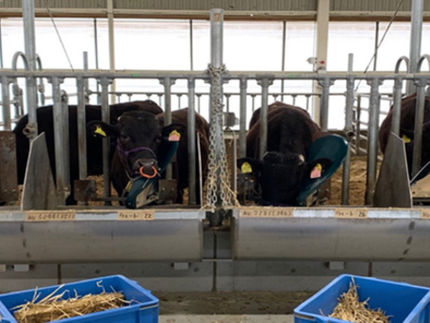A sweeter brew for all
Advertisement
“Complex, juicy, with citrus and sweet notes of peach”, the distinct flavour of Diofanor’s ‘black honey’ coffee flows directly from a level of craftsmanship beyond the norm; a far cry from the seasonal spiced concoctions that trend in the UK.
As you walk around Finca La Divisa, nestled in the northern reaches of the Andes mountains, in the heart of the Zona Cafetera – Colombia’s coffee belt – you get a sense of what makes Diofanor’s coffee so special. Glossy green trees climb up the mountainside reaching altitudes of 1750 meters, each one weighted down with bundles of bright red cherries. They sit under a protective canopy of plantain, citrus, avocado and forest trees, carefully selected and planted to offer just the right shade, air-flow and nutrition around the coffee for self-fertilisation, and greater protection against pests – completely eliminating the need for chemical pesticides.
At the foot of the lush slopes, last week’s harvest of ripe coffee cherries, is spread out and neatly sectioned in raised beds on a rooftop to dry. The patchwork of black, red and yellow beans displays the varying amounts of the sticky, sugary pulp or mucilage, left on after the fruit is separated from the seed – aptly known as honey processing. It is the attributes of these expertly processed “honeys” and the care that goes into them, that is the differentiator from traditional industrial blends and that are increasingly winning the hearts of special coffee consumers.
Realising the route to profitability lay in specialisation, eight years ago Diofanor started working with Andrés, one of Olam’s 21 agronomists in Colombia who are on the ground to offer tailored training and financial support to farmers all year round. Having taken up the offer of attending a Q-Processing course co-funded by Olam and US roaster S&D Coffee &Tea®, today he’s an alchemist, experimenting with fermentation methods – wet, dry and anaerobic, for periods of up to 120 hours - to produce interesting coffees that generate more bang from his beans. And at a time when millions of his coffee colleagues were jumping from the market rollercoaster as it plummeted to new lows last year.
The recent collapse in coffee commodity prices has meant the smallholders that produce four out of five cups of coffee around the world have been forced to sell much below the costs of production with many uprooting and heading for the cities to become delivery or Uber drivers. Indeed, without the means to invest in more resilient hybrids and other adaptation measures for the future, they can hardly be blamed for giving up.
So why aren’t more of them waking up to the payoff from a better cup?
Differentiated processing is certainly a great way to diversify a grower’s coffee offering and will work wonders for the right farms, but achieving consistent quality and flavour profiles from honeys and naturals also comes with more risk. Getting them right requires technical management, investment and know-how – a luxury many farmers grounded in a price trough can’t afford. Even simple changes are hard for low-income producers to deliver, let alone the complex ones needed for experimental processing.
This is where responsibility lies with global coffee exporters like Olam. When we are already seeing how more extreme weather patterns can alter the flowering and fruiting cycles of coffee, as well an increase in pests and diseases, it’s not enough to be training farmers just about yield improvements to try and compensate for low prices in the short term. Where there is potential, growers need encouraging and upskilling to produce higher quality beans that qualify for specialty coffee markets, where prices are higher and more stable.
56,000 coffee smallholders across 17 origins are engaged in Olam sustainability programmes with customer partners like S&D, receiving technical training like shade tree management, smart fertilisation and soil nutrition, as well as improved post-harvest techniques, all geared towards securing the farmers those all-important quality premiums that can offer a valuable life-line.
Of course, the coffee terroir all plays a part, but a quality cup is rooted in the multiple stages of scrupulous cherry selection to separate the good from the great, before the beans even reach their drying beds. At Finca La Divisa it starts on the steep slopes amongst the coffee trees, which have been sectioned into small differentiated plots, from which only the perfectly ripe, cranberry-like cherries are picked. Even a few stray ‘bad' beans can alter the flavour profile of an entire lot.
They are then ‘floated’; just like panning for gold, the densest, ripest cherries sink to the bottom. Full of sugars; these denser beans can shape a richer, more nuanced flavour in the cup, and for farmers will fetch a higher return per bean, per coffee tree and therefore per hectare.
Next stop - and according to Diofanor, the most important - is the sorting station, manned by four women who meticulously sift through piles of cherries, examining the colour, size and density as if they were pearls, every now and then taking a closer look at one to make sure it goes in the right bucket. This attention to detail means that 50% of Diofanor’s harvest makes the specialty grade, with quality scores reaching 88, on a cup scale where 80 is just so-so and any coffees above 95 are archeologists’ El Dorado. And his reward is a sale price 50-90% above the market rate.
The infrastructure, care and dedication required for superior quality coffees, is only attainable for most growers through partnerships with exporters or roasters, but the payoff is huge. Helping a farmer to reach a score of 85 – just 3 points above a standard ‘clean’ cup – can fetch an additional 20-30% on the base price for their beans, meaning better livelihoods and opportunities to invest in their farms. While for coffee consumers, the difference is in the perfect cup.
So tomorrow, when you grab your morning brew, take a moment to consider everything that goes into it, picture the farmer and savour the rich story behind your cup.




































































